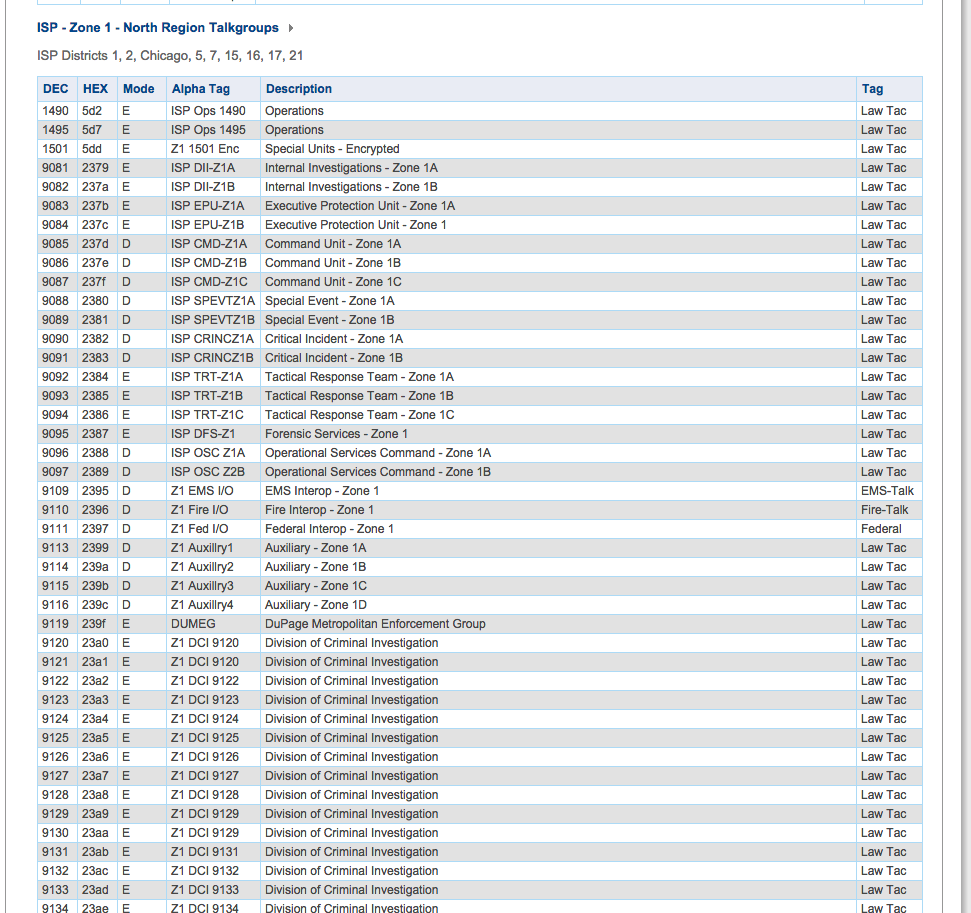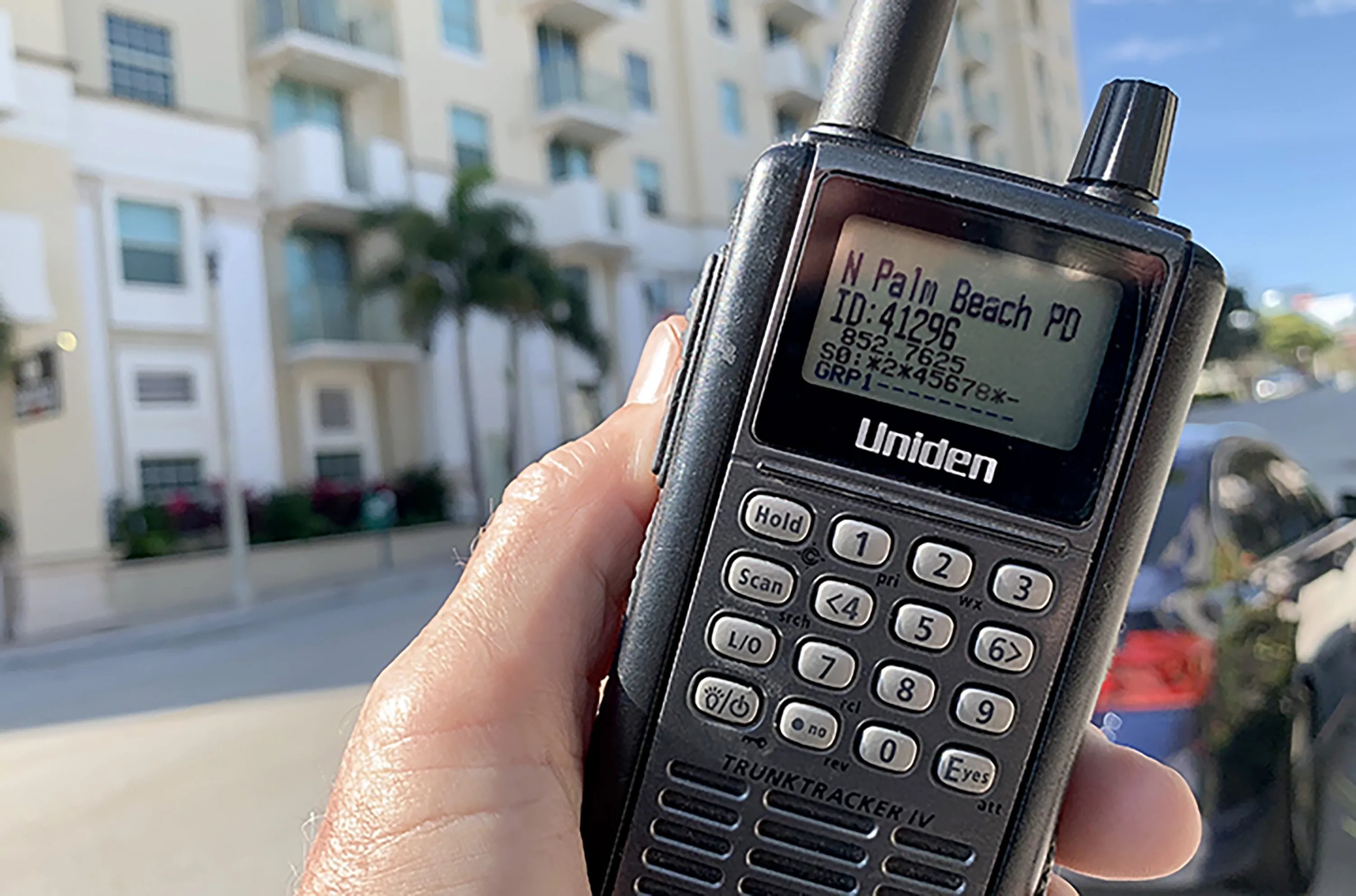Police frequencies for Ohio are an essential tool for individuals who want to stay informed about public safety and emergency situations in their area. Whether you're a hobbyist, journalist, or simply someone interested in understanding how law enforcement agencies communicate, this guide will provide all the information you need. From the basics of police radio frequencies to advanced scanning techniques, we'll cover everything step by step.
Ohio has a vast network of law enforcement agencies that rely on radio communication to coordinate efforts and respond to emergencies. Understanding these frequencies can be invaluable for anyone looking to gain insights into real-time events or enhance their knowledge of public safety protocols. In this article, we'll delve into the details, ensuring you have a comprehensive understanding of the topic.
As you explore the world of police radio frequencies, you'll discover how these systems operate and why they are crucial for maintaining public safety. From local police departments to statewide agencies, the communication infrastructure in Ohio is complex and fascinating. Let's dive into the details and uncover everything you need to know.
Read also:Christopher Sheahan Navy Seal
Table of Contents
- Introduction to Police Frequencies in Ohio
- The History of Police Radio Frequencies
- The Current System of Police Frequencies for Ohio
Scanning Equipment for Monitoring Police Frequencies
- Comprehensive List of Police Frequencies for Ohio
- Legal Considerations for Monitoring Police Frequencies
Benefits of Monitoring Police Frequencies
- Challenges in Monitoring Police Frequencies
- Tips for Effective Monitoring
- The Future of Police Frequencies in Ohio
Introduction to Police Frequencies in Ohio
Police frequencies for Ohio form the backbone of communication between law enforcement agencies and first responders. These radio frequencies enable real-time updates during emergencies, ensuring that officers and emergency personnel can coordinate effectively. Understanding how these systems work is not only educational but also practical for those interested in public safety.
The state of Ohio operates under a complex network of radio frequencies managed by local police departments, sheriff's offices, and state agencies. Each jurisdiction may have its own set of frequencies, making it important to understand the specific channels used in your area. This section will provide an overview of the system and its importance in maintaining public safety.
In addition to law enforcement, other emergency services such as fire departments and ambulance services also rely on these frequencies. This interconnected system ensures that all first responders can communicate seamlessly during critical situations. By familiarizing yourself with these frequencies, you gain insight into the workings of Ohio's public safety infrastructure.
The History of Police Radio Frequencies
The use of radio communication in law enforcement dates back to the early 20th century. In Ohio, the adoption of police radio systems began in the 1930s, revolutionizing how officers communicated and responded to emergencies. Initially, these systems were simple one-way transmissions, but advancements in technology have transformed them into sophisticated two-way communication networks.
Over the years, Ohio has seen significant improvements in its police radio infrastructure. The introduction of trunked radio systems in the 1990s allowed for more efficient frequency usage and better coordination between agencies. This evolution has been driven by the need for improved interoperability and reliability in emergency situations.
Today, the history of police radio frequencies in Ohio reflects a journey of innovation and adaptation. From analog systems to modern digital networks, the state's law enforcement agencies continue to embrace advancements to enhance public safety. Understanding this history provides context for the current state of police frequencies in Ohio.
Read also:Ontpresscom General Updates
The Current System of Police Frequencies for Ohio
Ohio's current police frequency system is a combination of traditional analog and modern digital technologies. This hybrid approach ensures that both legacy equipment and cutting-edge devices can operate within the same network. The system is designed to provide seamless communication across various jurisdictions and agencies.
Key features of the current system include:
- Trunked radio systems for efficient frequency management
- Digital encryption for secure communications
- Interoperability with other emergency services
Local police departments, sheriff's offices, and state agencies all utilize this system to maintain constant communication. The integration of digital technologies has enhanced the reliability and security of these frequencies, ensuring that sensitive information remains protected.
Scanning Equipment for Monitoring Police Frequencies
To effectively monitor police frequencies for Ohio, you'll need the right scanning equipment. Modern police scanners are capable of tuning into both analog and digital frequencies, providing comprehensive coverage of law enforcement communications. Here are some popular options:
- Uniden BCD396T2: A high-performance scanner with digital capabilities
- RETEKESS R8600DSS: An affordable option with excellent range
- Whistler TRX-1: A compact scanner ideal for portable use
When selecting scanning equipment, consider factors such as frequency range, digital support, and ease of use. Investing in a reliable scanner will ensure that you can monitor police frequencies effectively and stay informed about public safety events in Ohio.
Comprehensive List of Police Frequencies for Ohio
Below is a list of commonly used police frequencies for Ohio. Note that these frequencies may vary depending on the jurisdiction and agency:
- Columbus Police Department: 154.750 MHz
- Cleveland Police Department: 154.340 MHz
- Cincinnati Police Department: 154.820 MHz
- Ohio State Highway Patrol: 155.270 MHz
For a more detailed list, you can refer to online resources such as RadioReference.com, which provides up-to-date information on police frequencies across the state. Always ensure that you have the most current data, as frequencies can change due to system upgrades or reconfigurations.
Legal Considerations for Monitoring Police Frequencies
While monitoring police frequencies for Ohio is legal, there are certain guidelines and restrictions to be aware of. In the United States, it is permissible to listen to public safety communications, but recording or disseminating sensitive information may violate privacy laws. It's essential to familiarize yourself with local regulations to avoid any legal issues.
Key legal considerations include:
- Do not record or share confidential information
- Respect privacy rights during monitoring
- Adhere to federal and state laws regarding communication interception
By following these guidelines, you can enjoy the benefits of monitoring police frequencies while staying within the bounds of the law. Always prioritize ethical use and respect the privacy of individuals involved in law enforcement communications.
Benefits of Monitoring Police Frequencies
Monitoring police frequencies for Ohio offers several benefits for individuals and communities. Some of these advantages include:
- Enhanced awareness of public safety events
- Real-time updates on emergency situations
- Improved understanding of law enforcement operations
For hobbyists, journalists, and concerned citizens, monitoring these frequencies provides valuable insights into the workings of public safety agencies. It also fosters a sense of community engagement and responsibility, as individuals can stay informed and prepared for potential emergencies.
Challenges in Monitoring Police Frequencies
Despite the benefits, monitoring police frequencies for Ohio comes with its own set of challenges. One of the primary issues is the complexity of the system, which can make it difficult for beginners to navigate. Additionally, the use of encryption and digital technologies has limited access to certain frequencies, requiring specialized equipment for effective monitoring.
Other challenges include:
- Frequency changes due to system upgrades
- Interference from other radio signals
- Legal restrictions on certain types of communications
Addressing these challenges requires a combination of technical knowledge, reliable equipment, and adherence to legal guidelines. By staying informed and prepared, you can overcome these obstacles and make the most of monitoring police frequencies.
Tips for Effective Monitoring
To maximize your experience when monitoring police frequencies for Ohio, consider the following tips:
- Invest in quality scanning equipment with digital capabilities
- Regularly update your frequency database to ensure accuracy
- Join online forums or communities to share information and tips
Additionally, familiarize yourself with the local law enforcement agencies and their communication protocols. This knowledge will help you better understand the context of the transmissions you're monitoring. By following these tips, you'll be able to effectively track police frequencies and stay informed about public safety events in Ohio.
The Future of Police Frequencies in Ohio
The future of police frequencies for Ohio is shaped by ongoing advancements in communication technology. As law enforcement agencies continue to adopt digital systems and encryption methods, the landscape of police radio communications will evolve. This shift toward modernization aims to enhance security, interoperability, and efficiency in public safety operations.
Key trends to watch include:
- Increased use of digital trunked systems
- Integration of broadband technologies for improved data sharing
- Expansion of statewide communication networks
As Ohio's law enforcement agencies embrace these advancements, the role of police frequencies in maintaining public safety will become even more critical. Staying informed about these developments will ensure that individuals and communities can continue to benefit from effective monitoring and communication.
Kesimpulan
Police frequencies for Ohio play a vital role in ensuring public safety and coordinating emergency responses. From understanding the history of these systems to exploring the latest advancements, this guide has provided a comprehensive overview of the topic. By familiarizing yourself with the current system, legal considerations, and monitoring techniques, you can effectively track police frequencies and stay informed about events in your area.
We encourage you to take action by investing in reliable scanning equipment and joining online communities to share insights and experiences. Additionally, feel free to leave comments or questions below, and don't hesitate to explore other articles on our site for more information on related topics. Together, we can enhance our understanding of public safety and contribute to a safer community.


